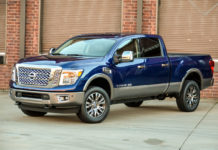For Detroit automakers and most others, increases or decreases in sales of new cars and trucks last month largely reflected changes in the value of incentives offered.
After boosting incentives earlier in the year, Ford Motor Co. and Chrysler LLC backed away from rebates and discounted loans in October, according to estimates by Autodata Corp.
The change in tactics may help explain why each saw sales fall by about 9% last month.
At GM, it was just the opposite. Incentives are still down for the year, according to Autodata, but they were up 10% in October, helping sales grow by 3.4%.
The biggest incentive increases — roughly 33% to $6,000 — came on full-size SUVs, such as the Chevy Tahoe.
The deals boosted sales for the month but are likely to signal to consumers that they can hold out for a bargain, warned Jonathon Steinmetz of Morgan Stanley in a note to clients.
“This product is still less than two years into its life,” he said. “In addition, crossover competition gets tougher over time, not easier.”
Toyota and Honda have been boosting incentives substantially — 25% to 30% — throughout the year, as they continue to gain U.S. market share. Those gaudy percentages, however, come from a much smaller base.
The gap between incentives offered by those two automakers and the Detroit Three has only narrowed from about $2,600 per vehicle to $2,300.
Nissan, however, bucked the trend, paring back incentives, while boosting sales.








